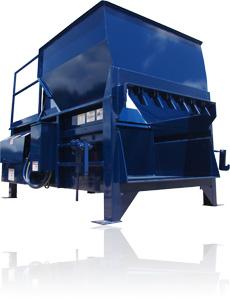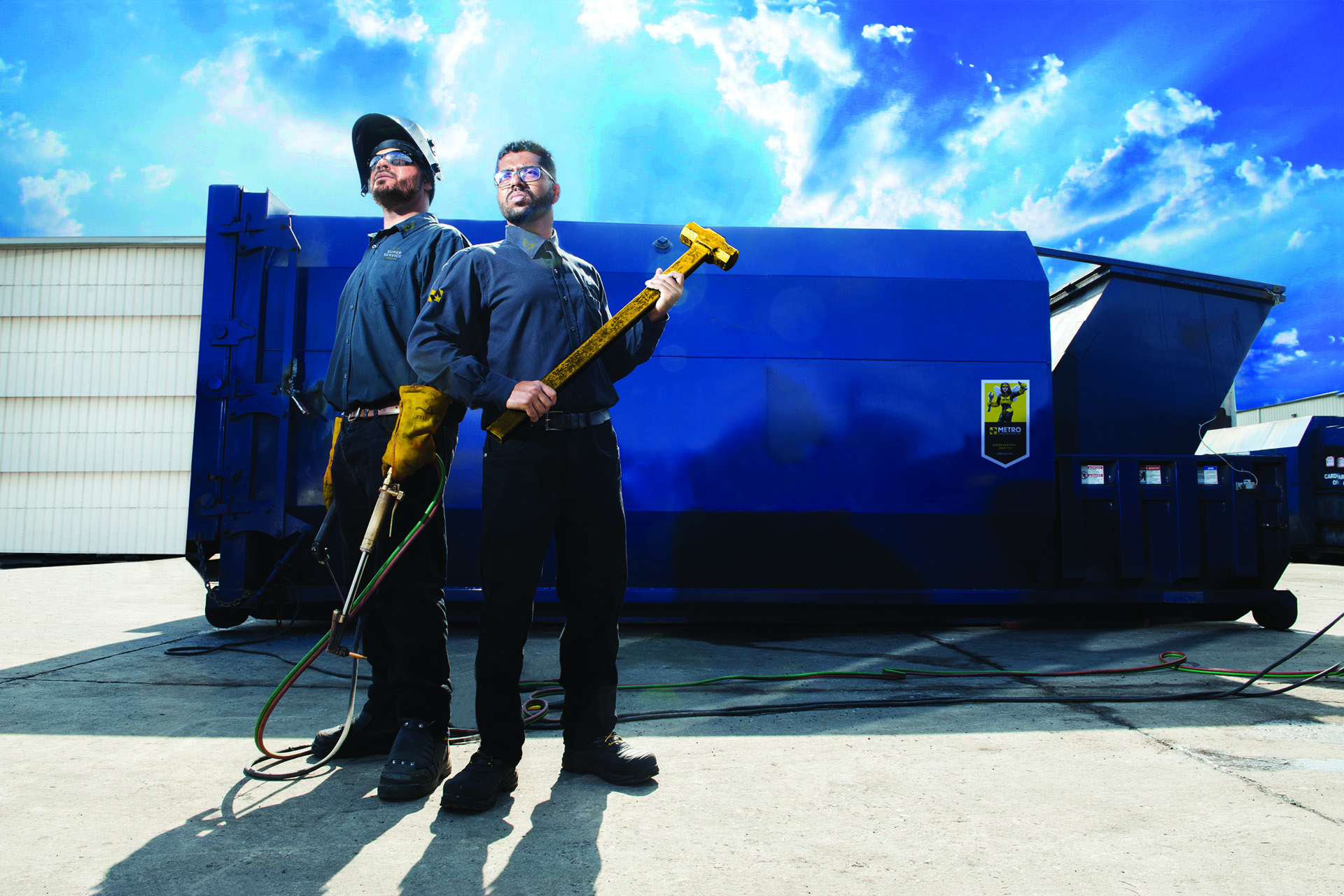Trusted Baler for Rent for Cardboard and Plastic Compression
Trusted Baler for Rent for Cardboard and Plastic Compression
Blog Article
Discovering the Crucial Function of Waste Tools in Modern Recycling Processes and Sustainable Waste Disposal Practices
The critical function of waste devices in modern-day reusing procedures underscores its relevance in accomplishing sustainable waste disposal methods. Advanced systems, such as automated arranging innovations and compactors, not just boost performance but also play a pivotal duty in decreasing contamination rates and improving material recovery. As the need for more lasting solutions grows, it is vital to examine just how these innovations adapt to advancing obstacles within waste administration. What innovative developments are on the perspective that could better change these processes?
Significance of Waste Equipment
Why is waste tools important in the reusing process? By helping with the splitting up of materials, waste devices minimizes contamination, which is vital in ensuring high-quality recyclables that can be reestablished right into producing cycles.
Additionally, waste tools enhances functional efficiency and safety within reusing centers. Advanced machinery, such as shredders and balers, permits the fast handling of large volumes of waste, lowering labor costs and processing time. In addition, making use of specific equipment reduces the danger of injury amongst employees by automating unsafe tasks.
Furthermore, the environmental impact of recycling is enhanced by efficient waste devices. By optimizing the reusing procedure, centers can significantly reduce the volume of waste sent to garbage dumps, thus adding to sustainability efforts. In final thought, waste tools is not merely an ancillary component of recycling; it is a basic facet that drives efficiency, security, and environmental stewardship in modern waste management techniques.
Kinds Of Waste Tools
The efficiency of recycling procedures is closely connected to the certain types of waste tools used in the process. baler rental. Various categories of tools are important to the collection, sorting, handling, and transportation of recyclable materials
To start with, collection equipment, such as waste collection vehicles and bins, is important for collecting recyclables from numerous sources, consisting of domestic, business, and industrial locations. As soon as gathered, arranging devices, consisting of conveyor belts, shredders, and magnetic separators, plays an essential function in distinguishing different product types, ensuring that pollutants are gotten rid of prior to handling.
Processing devices, such as balers and compactors, better prepares products for reusing by pressing and packaging them right into convenient sizes. This not just optimizes room but additionally enhances transport performance. Additionally, specialized machinery like granulators and extruders is utilized for changing products into reusable kinds, particularly in plastic recycling.

Duty in Recycling Processes
In reusing processes, the role of waste devices is critical in ensuring effectiveness and effectiveness at every phase. This equipment incorporates a variety of equipment developed to take care of, process, and sort materials that are to be reused. The preliminary stage involves collection and transport, where compactors and balers play an essential role in maximizing the volume of materials for transportation, therefore minimizing operational prices.
Once at the recycling center, shredders and crushers enter into play, damaging down products right into manageable sizes appropriate for more processing. These equipments add to enhancing the surface area of recyclables, facilitating extra reliable material healing. Arranging systems, outfitted with sophisticated modern technologies such as conveyor belts and optical sensing units, ensure that materials are accurately divided by type, thus making the most of the high quality of the recycled output.
Furthermore, specific tools for handling details products-- such as glass, plastics, and steels-- makes certain that each kind is taken care of in one of the most effective manner. Generally, the combination of sophisticated waste devices into the recycling process not just streamlines operations but also substantially adds to the total recuperation prices of valuable products, emphasizing its crucial role in contemporary recycling initiatives.
Effect on Sustainable Practices
Via the effective operation of waste devices, recycling procedures dramatically boost lasting methods across numerous markets. This impact is recognized with increased material healing rates, which reduce the need for virgin resources. By Discover More Here enhancing sorting and processing features, like it advanced waste tools lessens contamination in recyclable materials, therefore boosting the high quality of recycled output. The decrease of waste sent out to garbage dumps is an additional vital benefit, as it minimizes ecological destruction and reduces greenhouse gas emissions related to decay.

Moreover, the integration of wise modern technologies in waste administration systems permits real-time data monitoring and evaluation, causing even more enlightened decision-making and operational performances. As sectors significantly focus on sustainability, the role of waste tools ends up being extremely important in forming methods that line up with ecological stewardship and regulatory compliance. Inevitably, the synergy between waste devices and recycling procedures plays a vital duty ahead of time broader sustainability objectives throughout neighborhoods and industries alike.
Future Patterns in Waste Monitoring
Emerging trends in waste administration are poised to reshape the landscape of recycling and resource recovery considerably. Smart waste bins furnished with sensors can keep track of waste levels in real-time, optimizing collection courses and minimizing operational prices.
Furthermore, the circular economy design is acquiring grip, advertising the concept of reusing products rather than taking care of them. This pattern motivates companies to design items with end-of-life considerations in mind, driving the demand for ingenious waste monitoring remedies.
Additionally, public awareness and involvement in sustainability practices get on the rise, resulting in increased engagement in recycling programs. Government plans are also advancing, with more stringent guidelines on garbage disposal and motivations for sustainable methods.
As these trends assemble, they create a much more reliable, sustainable waste management system that not just reduces environmental effect yet also fosters financial development with source recovery and development in waste devices. The future of waste monitoring looks promising, driven by innovation and a commitment to sustainability.
Verdict
In verdict, waste equipment plays an essential duty in improving the efficiency and performance of contemporary reusing procedures. As waste management continues to evolve, the significance of cutting-edge waste devices will certainly continue to be paramount in attaining sustainability goals and dealing with discover this the obstacles of resource depletion.
Report this page